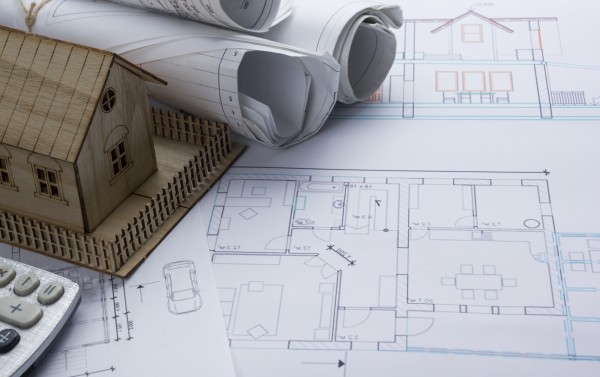Planning permission: everything you need to know
You’ve found the plot and finalised your designs. You’re ready to steam ahead on your self-build project but there are a few loops to jump through before you commence work.
Planning permission for self-build can come with the plot or you can apply before or after you have purchased land. If your plot does not come with planning permission approved, seek the advice of your Local Planning Authority (LPA).
It is advisable to engage with your LPA, before applying, in order to understand these constraints on the land that may prevent development. You can find these on the LPA websites. Pre-application advice is generally chargeable but engaging with your LPA at those early stages can result in a successful outcome.
It’s important to remember that LPAs can enforce very different rules across different parts of the country. Do consider local planning restrictions when putting your application together – it could save you time and money.
First things first
When you locate a suitable plot of land you can obtain Outline Planning Permission (OPP) before committing to the purchase. This establishes the scale and nature of the proposed development before putting forward a detailed proposal. In short, OPP is simply permission for the principle of development on a site. If a plot is granted OPP, you will still need to make a supplementary application for full planning permission at a later date and no building work can be undertaken on OPP alone. OPP status is usually valid for three years at which point reapplication will need to be made.

Once an OPP has been granted, a ‘reserved matters’ application deals with outstanding details of the outline permission including details about the appearance of the development, access, landscaping, layout and scale. The reserved matters application must accord with the outline approval, including any conditions attached to the permission. If proposals have materially altered, you may need to reapply for outline or full planning permission.
The alternative to this is Detailed Planning Permission (DPP) and this indicates that a detailed application has been submitted to the LPA. Location plans and other supporting information are usually submitted at this stage.
What you need to submit
As a minimum, you must provide the following documents for your planning application to be valid:
- The standard application form
- Most planning applications require two plans to be submitted as supporting documents. These include the location plan (the site area and its surrounding context) and the site plan (the proposed development in detail).
- An ownership certificate A, B, C or D must be completed stating the ownership of the property.
- Agricultural holdings certificate – this is required whether or not the site includes an agricultural holding. All agricultural tenants must be notified prior to the submission of the application.
- Design and access statement (if required) – this should outline the design principles and concepts that have been applied to the proposed development and how issues relating to access to the development have been dealt with.
- The correct application fee. You can calculate this via the government’s website, the Planning Portal.

How much?
You will need to send your plans to your local authority planning department to obtain detailed planning permission and building regulation approvals. Your local authority will charge for these services as they will need to send out an inspector to view the plot to assess the suitability as well as release details of your application so that objections can be lodged.
According to the government website, the Planning Portal, the current cost for a full application for a new single dwelling is £462 but this fee differs in Wales, Scotland and Northern Ireland. As well as fees for pre-application advice, further small sums are payable for the discharge of planning conditions which must be met before development begins.
You may find that you could make more than one planning application or changes to your plans. You can make minor alterations by applying for a non-material amendment. However, major alterations could involve a further application for full planning permission, so discuss your plans with your LPA first. It’s good to put extra cash aside for planning permission.
Time frames
All planning permissions generally have three years from the date full consent is granted to begin building.
From registration, on average the council will decide on your application within 10 to 12 weeks.
Once the local authority has received all the necessary responses, the planning officer will assess the proposal against the local authority planning policies. The planning officer will then make a decision regarding the application or a recommendation for the planning committee.

If there is a problem with your application, the planning officer may contact you to try and resolve it. If it is refused, you will need to re-submit an amended proposal or appeal against the decision.
For more information on planning permission visit www.planningportal.co.uk.

